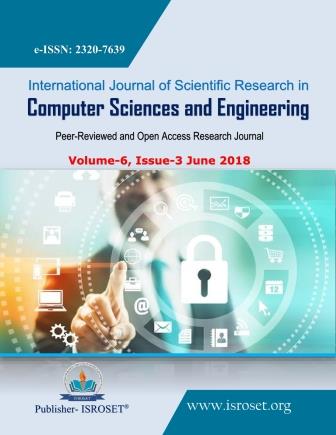A Review Toward Internet Crime Evaluation
Keywords:
internet crime, power assertive, typology, subtypes, cyber stalkingAbstract
The idea of guilty party profiling in computer related wrongdoing is in its earliest stages. Essentially no exploration exists that relates guilty party profiling unequivocally to digital violations or digital hoodlums. However it can`t be denied that, given the expansiveness of potential suspects in a digital occasion, some strategy for diminishing that number to a reasonable level took after by the capacity to distinguish a modest number of trustworthy suspects is extremely alluring. Today, much digital wrongdoing is dealt with by the criminal equity framework as unique instances of physical wrongdoing. There is little contention, in any case, that there are parts of PC related wrongdoings and the offenders who execute them that are special to the virtual, as opposed to the physical world. The examination portrayed in this paper looks to set up criteria for dissecting digital wrongdoings and hoodlums in the clear, unambiguous setting of the virtual world. The creators have conjectured four general classes of PC related wrongdoing: 1) robbery, 2) framework assault, 3) individual and 4) psychological warfare. This paper talks about a particular part of the individual class of digital wrongdoing: digital stalking. The four sub-types talked about are the consequence of many years of observational application involving a large number of cases in the physical world. They have demonstrated dependable in examination of vicious violations, for example, assault and kill. A basic reason in the momentum look into is use of the sub-types in digital examination. This is a "Explore in-advance" paper, exhibiting a theory that will be tried exactly in the following period of the exploration. Nonetheless, we give a model case which we delineate the potential utilization of the profiling strategies introduced.
References
R. D. Keppel, and R. Walter, “Profiling killers: a revised classification model for understanding sexual murder,” International Journal of Offender Therapy and Comparitive Criminology, vol. 43, no. 4, pp. 417437, 1999.
M. L. Pittaro, “Cyber stalking: an analysis of online harassment and intimidation,” International Journal of Cyber Criminology, vol. 1, no. 2, pp. 180-197, 2007.
L. E. Cohen, and M. Felson, “Social change and crime rate trends: a routine activity approach,” American Sociological Review, vol. 44, no. 4, pp. 588-608, 1979.
E. E. Mustain, and R. Tewksbury, “A routine activity theory explanation for women`s stalking victimization,”. Violence Against Women, vol. 5, no. 1, pp. 43-62, 1999.
L. McFarlane, and P. Bocij, “Cyber stalking: defining the invasion of cyberspace,” Forensic Update, vol. 1, no. 72, pp. 18-22, 2003.
E. Ogilvie, “Cyberstalking,” in Trends and Issues in Crime and Criminal Justice, no. 166. Canberra, Australia: Australian Institute of Criminology, 2000, pp. 1-6.
A. W. Burgess, and T. Baker, “Cyberstalking,” in Stalking and psychosexual obsession:Psychological perspectives for prevention, policing and treatment, J. Boon, and L. Sheridan, Eds. Chichester, UK: Wiley, 2002, ch. 12.
L. McFarlane, and P. Bocij. (2003, September). An exploration of predatory behaviour in cyberspace: Towards a typology of cyberstalkers. First Monday [Online]. 8(9). [Cited: January 3, 2011] Available: http://firstmonday.org/htbin/cgiwrap/bin/ojs/index.php/fm/article/view/1 076/996.
G. Wondracek, C. Platzer, E. Kirda, and C. Kruegel. “Is the Internet for porn? An insight into the online adult industry,” in Proc. 9th Workshop on the Economics of Information Security, Harvard University, Cambridge, Massachusetts, USA, 2010, pp. 1-14.
T. J. Holt, and A. M. Bossler, “Examining the applicability of lifestyleroutine activities theory for cybercrime victimization,” Deviant Behavior, vol. 30, no. 1, pp. 1-25, 2009.
N. A. Groth, and H. J. Birnbaum, Men Who Rape: The Psychology of the Offender. New York, NY: Plenum Press, 1979.
R. R. Hazelwood, and A. W. Burgess, Practical Aspects of Rape Investigation (4th ed.). Boca Raton, FL : CRC Press, 2009.
United States. Attorney General to the Vice President. 1999 Report on Cyberstalking: A New Challenge for Law Enforcement and Industry. Washington DC : United States Department of Justice, 1999.
P. Bocij, Cyberstalking - Harassment in the Internet Age and How to Protect Your Family. Westport, CT: Praeger Publishers, 2004. ASIA.
Downloads
Published
How to Cite
Issue
Section
License

This work is licensed under a Creative Commons Attribution 4.0 International License.
Authors contributing to this journal agree to publish their articles under the Creative Commons Attribution 4.0 International License, allowing third parties to share their work (copy, distribute, transmit) and to adapt it, under the condition that the authors are given credit and that in the event of reuse or distribution, the terms of this license are made clear.







